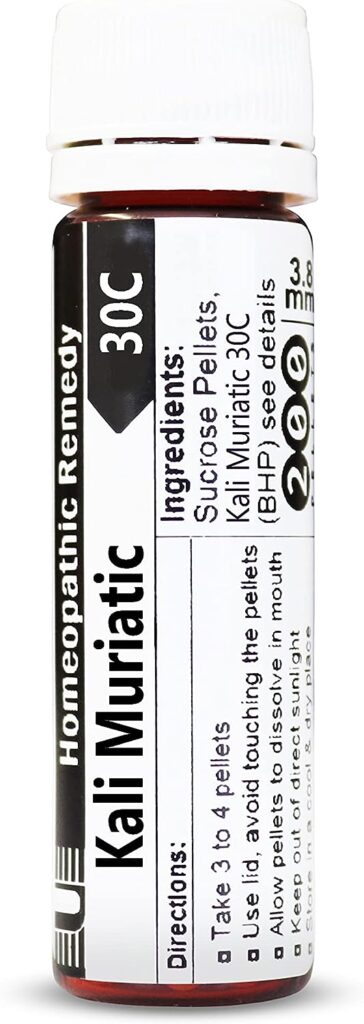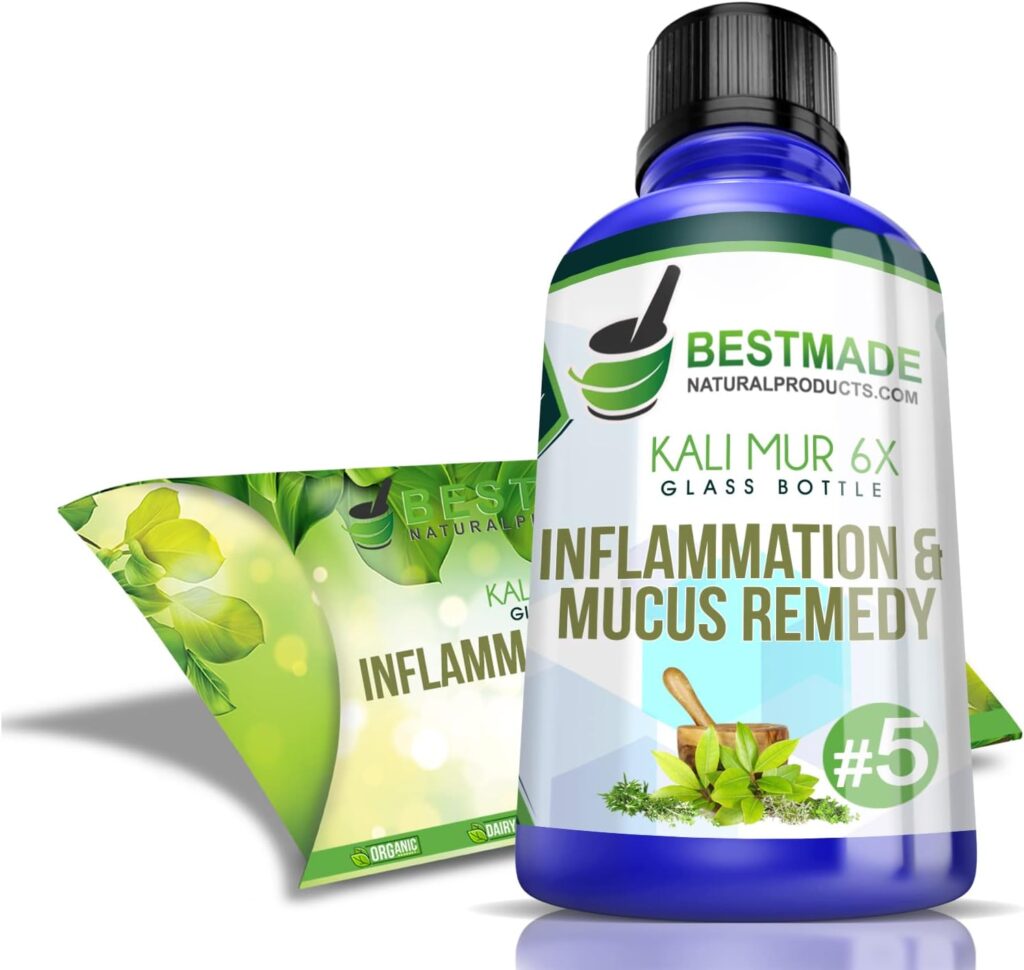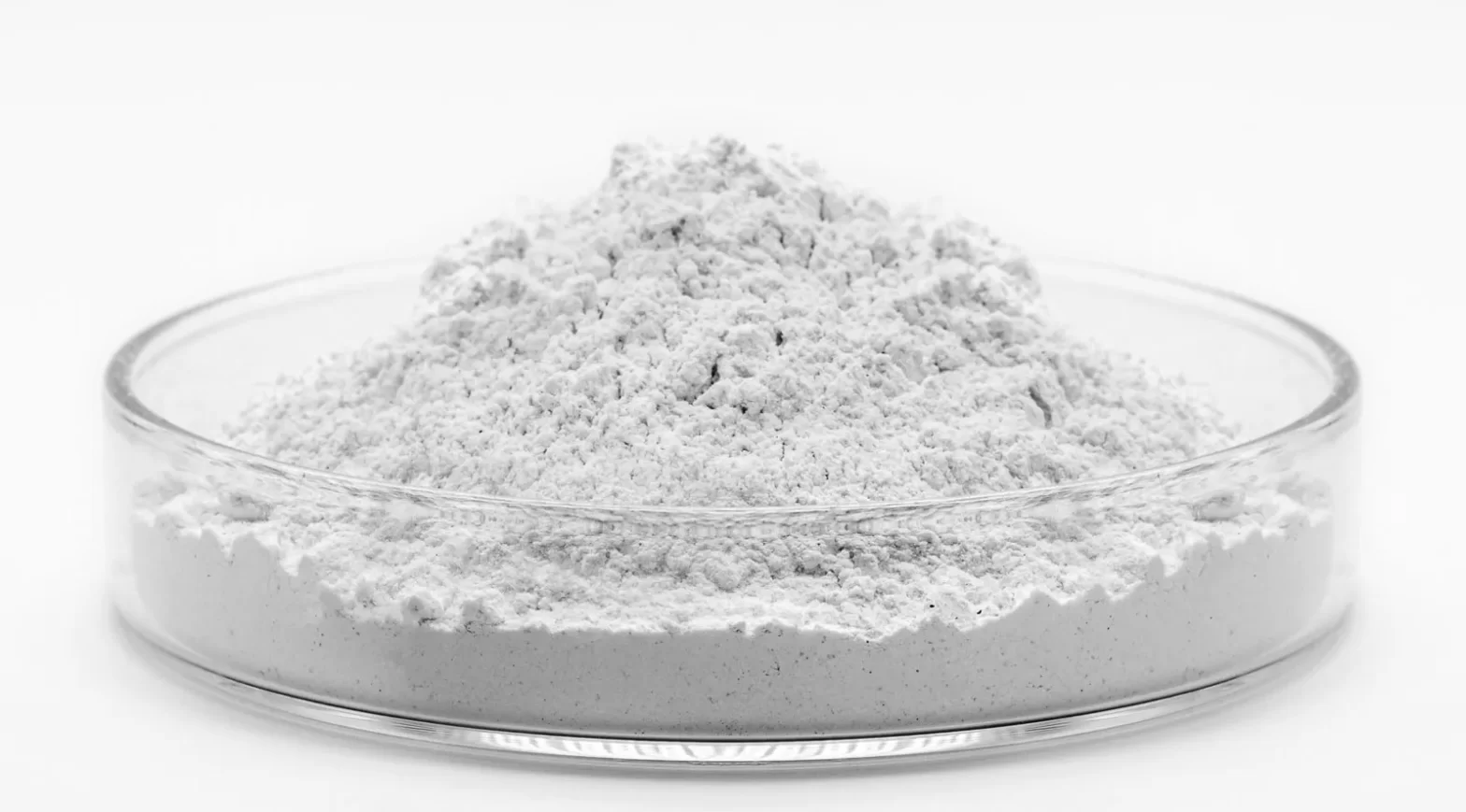Kali Muriaticum (Kali Mur), is a remedy derived from potassium chloride through the process of potentization. Positioned among Schuessler’s twelve tissue remedies, the Kali Mur remedy is an essential component of the biochemic medicines within homeopathy. Its versatile utility extends across a spectrum of ailments, encompassing ear infections, colds, and sore throats, particularly in instances where the symptomatology aligns with the remedy’s distinct profile characterized by thick white discharges.

Ear Complaints and the Efficacy of Kali Muriaticum
Kali Muriaticum’s remarkable efficacy in addressing ear-related concerns positions it as a superior choice for various conditions. The remedy showcases its profound impact on outer ear canal infections (otitis externa) as well as middle ear infections (otitis media). A distinct indicator lies in the presence of white ear discharge (otorrhoea) as a defining characteristic. The remedy’s influence extends to managing symptoms of earache and hearing difficulties stemming from swollen and congested middle ears. Kali Mur finds its niche in addressing complications associated with the eustachian tube – its use is particularly relevant when the eustachian tube becomes blocked, leading to difficulties in hearing, sensations of fullness, and the perception of noises. These noises might manifest as popping, snapping, or crackling, further illustrating Kali Muriaticum’s role in ear health.

Nasal Problems and the Significance of Kali Muriaticum
Kali Muriaticum’s therapeutic impact extends to nasal complaints, with a distinct focus on colds. The guiding feature for its application in this context is the presence of thick white mucus discharge from the nose, often accompanied by profuse sneezing. The remedy’s utility also encompasses conditions like frontal sinusitis, characterized by white mucus discharge. Kali Muriaticum demonstrates its efficacy in managing cases of nasal bleeding (epistaxis), primarily occurring during the afternoon or night hours, often from the right nostril. Its role in relieving nasal congestion further solidifies its relevance.
Throat Issues and Kali Muriaticum’s Role
Kali Muriaticum is a prominent choice in managing sore throat. The presence of ulcers accompanies a greyish-white coating within the throat. Individuals often experience the hawking of thick white mucus, which may contain cheesy small lumps characterized by an unpleasant odor and taste. Furthermore, Kali Muriaticum is well-suited for addressing cases of tonsillitis, which present with swollen, inflamed, and enlarged tonsils often coated in white or whitish-grey material. Intense pain during swallowing is a hallmark feature.
Head, Mouth, and Respiratory Issues: Kali Muriaticum’s Spectrum
Within the realm of head-related discomfort, Kali Muriaticum is useful in managing sinus headaches characterized by the expectoration of white mucus during coughing. The remedy extends its influence to alleviate headache accompanied by the vomiting of white phlegm. Furthermore, Kali Muriaticum proves efficacious in treating excessive white dandruff accompanied by scalp itching.
Kali Muriaticum’s therapeutic potential encompasses oral health, addressing conditions such as mouth ulcers, oral thrush, stomatitis, and coated tongue. The remedy provides relief for ulcers inside the lips and on the upper surface of the tongue, often accompanied by excessive saliva. Oral thrush cases characterized by white ulcers in the mouth are also well-suited for Kali Muriaticum. In instances of stomatitis, where the entire mucus surface of the mouth appears red with multiple grey ulcers, this remedy offers a solution. Moreover, it addresses instances where the tongue presents a greyish-white, thick, sticky, and slimy coating.

Kali Muriaticum’s therapeutic scope extends to respiratory concerns, especially cough characterized by the expectoration of thick, white sputum. It stands as an effective choice in cases of bronchitis and pneumonia where the formation of thick white mucus proves challenging to expel. Rattling sounds within the bronchi due to the passage of thick, sticky mucus further elucidate its influence.
Limbs and Joints: Kali Muriaticum’s Influence
Kali Muriaticum’s impact on joint pains is noteworthy, particularly when discomfort occurs during movement or at night, often accompanied by pronounced joint swelling. Its utility extends to individuals with persistently cold hands and feet. Additionally, the remedy finds application in managing chilblains and stiffness in the hands during writing.
Modalities and Dosage: Kali Muriaticum’s Approach
Noteworthy modalities guide Kali Muriaticum’s prescription. Complaints typically worsen with cold drinks, fatty foods, exposure to open air, and during the nighttime hours. Conversely, relief is observed with the consumption of cold drinks, gentle rubbing, and movement. Kali Muriaticum should administered in low potencies ranging from third to twelfth power. A common preference lies in its use in 6X potency, with a recommended dosage of three to four times a day, tailored to individual case presentations.
Relationship with Other Remedies: Interactions and Comparisons
Belladonna, Hydrastis, Calcarea Sulph, and Pulsatilla are antidotes to Kali Mur. Its parallel with medicines like Kali Bichrome and Hydrastis arises from their shared affinity for addressing thick, tough mucus secretions. In the realm of joint complaints, comparisons with medicines like Bryonia and Rhus Tox provide insights into Kali Muriaticum’s distinct applicability. Lastly, its correlation with Mercurius Dulcis highlights its relevance in addressing eustachian tube complaints and ear inflammation.
